Results 10,341 to 10,350 of 12096
Thread: Anandtech News
-
02-18-20, 02:33 PM #10341
Anandtech: Qualcomm’s New 3rd Generation Snapdragon X60 5G Modem, Built on 5nm
To date Qualcomm has promoted two key standalone 5G modems for widespread adoption: the Snapdragon X50 and the Snapdragon X55. Today the company is disclosing details on its upcoming 3rd generation 5G modem design, the Snapdragon X60, which is being promoted as the premium offering for smartphones, industrial, and commercial designs that require a discrete 5G modem. Key features of this modem include the fact that it is built on a 5nm process, supports carrier aggregation between Sub-6 and mmWave, and offers up to 7.5 Gbps download speeds.
More...
-
02-18-20, 02:33 PM #10342
Anandtech: Qualcomm’s March on Connection Quality: New RF Filters with up to 0.8 dB B
One of the key components to any wireless system is the ability to detect the required frequency and ensure a clean signal with a stable connection. In order to do this, especially with Radio Frequency connections such as those in cell phones, a variety of filters are needed for specific frequency selection. Today Qualcomm is announcing that it has made a new breakthrough in its RF filter design through a novel thin film technology.
More...
-
02-18-20, 03:55 PM #10343
Anandtech: Compal Develops FlexBook: A Foldable 13-Inch PC with a Hardware Keyboard
Compal, a leading contract maker/ODM of notebooks and other mobile devices, has developed a prototype of a foldable hybrid tablet that can be equipped with a hardware keyboard. The design concept of Compal’s FlexBook resembles Lenovo’s ThinkPad X1 Fold that is due to be released in the coming months, but it is unclear whether the FlexBook will ever be commercialized.
Compal’s FlexBook looks like an ordinary 13-inch tablet with landscape orientation that features two speakers located on its lower side, two USB-C connectors, and volume buttons on a side. Yet the tablet can be folded in half as it is equipped with a foldable OLED display as well as a ‘zero gap lay flat hinge’. When half-folded, the device can be used as a notebook, but it is much more convenient to attach a dedicated hardware keyboard to it when working in stationary mode. The FlexBook also supports stylus, just like tablets aimed at creative professionals.
The FlexBook is encased in leather, so should look and feel very good. Unfortunately the company isn't saying anything about the internals of the prototype FlexBook, as it's clear they're opting to instead focus on the design and folding capabilities (i.e. the parts they actually designed) rather than whose hardware is underneath. An Arm SoC seems likely for this prototype, though to a certain extent it doesn't matter as devices this large typically can be made to accommodate SoCs from pretty much any vendor.
Since Compal is a contract maker of computers and other electronics, it does not manufacture its own products carrying its brand. To that end, FlexBook may serve as a proof of concept and as a reference design for a vendor interested in bringing a product like this to the market. Only time will tell whether or not Compal’s clients are interested in FlexBook-like devices, but the company evidently has engineering skills to develop and build foldable tablets.
Compal’s official description of its FlexBook reads as follows:
Encased in rich and luxuriant leather, the 13” FlexBook is a next generation flexible tablet/laptop duo that captures the supreme convenience of a lightweight tablet plus the usability and performance of a mini PC. When separated, the OLED tablet features a perfect, zero gap “lay flat hinge” so user is free to fold in half for effortless mobility and safekeeping, then flip open like a book to write with the stylus over its absolute no image loss screen. Attach tablet onto the keyboard and instantly turn FlexBook into a compact laptop great for fixed location work. This is a modern-day marriage between stationary and mobile work in style.Related Reading:
- Lenovo’s ThinkPad X1 Fold: Combining Foldable Displays, 5G and Lakefield into a… Laptop?
- Lenovo: Foldable ThinkPad X1 to Launch in 2020
- Motorola Brings Back The Razr: Flip-Phone In 2020
- Samsung Announces The Galaxy Z Flip: Foldable Phone With Glass
- Motorola’s $1500 Foldable Razr to Ship Early February: Pre-Orders Soon
- Quick Bytes: Motorola in Profit, 2020 Focus on Innovation, Foldables, and 5G
Sources: iF World Design Guide, Liliputing
More...
-
02-18-20, 03:55 PM #10344
Anandtech: Patriot Releases Cheap P300 M.2 PCIe SSDs: Two Products, Same Name
Patriot has launched its new family of entry-level NVMe SSDs with a PCIe 3.0 x4 interface designed for budget PCs. Patriot’s P300 drives come in capacities ranging from 128 GB all the way to 2 TB, but there is a catch. Although all the SSDs carry the same P300 name, they will use different controllers.
For the US market, Patriot offers P300 SSDs on blue PCBs based on the Phison PS5013-E13T controller, whereas for other markets the company rolled out P300 drives on black PCBs powered by the Silicon Motion SM2263XT chip. It is noteworthy that earlier this year the company implied at a meeting that Phison-powered drives might also show up on non-US markets. Patriot did not disclose what type of memory it plans to use with the drives, but what we often see is Phison controllers paired with Toshiba’s BiCS 3D TLC NAND, while SMI silicon is accompanied by Intel’s 3D TLC memory. Meanwhile, we do not known whether there is a plan to use the cheapest 3D TLC NAND memory available at a given time with either controller to reduce costs, but it is a possibility.
Performance-wise, Patriot promises that SSDs featuring different controllers will demonstrate similar speed and endurance, though it is clear that there will be some variability between models for the US and other markets. In particular, Patriot says that drives feature up to 2,100 MB/s sequential read speed, up to 1,650 MB/s sequential write speed, up to 290K random read IOPS, as well as up to 260K random write IOPS.
While performance numbers look pretty solid for entry-level products (at least when compared to Patriot’s previous-generation Scorch SSDs), their endurance is not that impressive as the company only rates them for about 0.28 DWPD (drive writes per day) over a three-year period. Consumer workloads are not write-intensive and certainly low-end products will not be used by content creators.
*Likely a typo in Patriot's documentsPatriot's PM300 Entry-Level SSD Specifications Capacity 128 GB 256 GB 512 GB 1 TB 2 TB Versions Blue USA Black Rest of the World Model Number Blue P300P128GM28US P300P256GM28US P300P512GM28US P300P1TBM28US P300P2TB Black P300P128GM28 P300P256GM28 P300P512GM28 P300P1TBM28 - Controller Blue Phison PS5013-E13T Black Silicon Motion SM2263XT NAND Flash 3D TLC NAND from Intel or Toshiba Form-Factor, Interface M.2-2280, PCIe 3.0 x4, NVMe 1.3 Sequential Read Blue 1600 MB/s 1700 MB/s 1700 MB/s 2100 MB/s 2100 MB/s Black - Sequential Write Blue 600 MB/s 1100 MB/s 1100 MB/s 1650 MB/s 1650 MB/s Black 1200 MB/s - Random Read IOPS 290K 290K Random Write IOPS 150K 260K Pseudo-SLC Caching Supported DRAM Buffer No TCG Opal Encryption ? Power Consumption Idle 0.37 W Blue: 0.37 W
Black: 0.38 W0.38 W Full 2.07 W Blue: 2.07 W
Black: 2.38 W2.38 W Warranty 3 years MTBF ? TBW 40 TB 80 TB 160 TB 320 TB 320 TB* DWPD 0.28 DWPD 0.14 DPWD* Additional Information Link MSRP ? $64.99 $104.99 $164.99 ?
Initially, Patriot will offer 256 GB, 512 GB, and 1 TB versions of its P300 SSDs. The entry-level 256 GB model carries a $64.99 MSRP, the highest-capacity 1 TB SKU is priced at $164.99, whereas the mid-range 512 GB variant sits between them at $104.99.
Patriot is not the only vendor to release SSDs with different controllers and memory under the same name. Team Group introduced its MP33 drives with the same Phison and SMI controllers back in October. Using different controllers and memory from numerous suppliers within one lineup of SSDs allows the maker to offer the most aggressive prices for all configurations, but the real-world performance of actual products will differ. The latter means difficult qualification process for PC makers as well as uncertainty among end-users.
Related Reading:
- Patriot Launches P200 SSDs with Maxio and Silicon Motion Controllers: From $31.99
- Biostar Launches M700 SSDs: Entry-Level PCIe SSDs
- Mushkin’s Helix-L SSDs Available: Pushing the Price of 3D TLC
- Team Group Unveils MP33 SSDs: Entry-Level PCIe Drives
Source: Patriot
More...
-
02-18-20, 11:37 PM #10345
Anandtech: Showa Denko Begins Shipments of Platters for MAMR HDDs
Following up on news from earlier this month that they have developed HAMR HDD platters, Showa Denko K.K. (SDK) has announced that it has started shipments microwave assisted recording (MAMR) HDD platters. The announcement confirms that MAMR media is in production and that Toshiba is on track to introduce HDDs using the tech in the coming quarters.
SDK’s media is set to be used for Toshiba’s nine-platter 18 TB MAMR hard drive for nearline applications. The platters feature a 2 TB capacity, with Toshiba taking advantage of the fact that the platters are thinner than those used in modern eight-platter designs. Showa Denko has never revealed which magnetic alloy or substrate it's using for its 2 TB media, though aluminum substrate is quite likely given the company’s focus on this material.
Showa Denko confirmed that it's shipping MAMR media to Toshiba in its 2019 Consolidated Financial Results presentation for investors and analysts. Shipments to Toshiba may indicate that the latter has begun sampling its 18 TB nearline hard drive. Though it is unknown how many drives Toshiba has shipped to its customers and whether they were engineering or qualification samples.
Unfortunately, SDK’s announcement does not give us any hints regarding availability timeframe of Toshiba’s 18 TB MAMR HDDs, but it does at least confirm that the HDD industry is one step closer to actually shipping commercial MAMR HDDs.
The statement by Showa Denko reads as follows:
“In 2019, SDK began shipment of newly developed 3.5-inch HD media which have storage capacity of 2 terabyte per disk based on the Microwave Assisted Magnetic Recording (MAMR) technology for next-generation hard disk drives (HDDs). This product, which SDK developed with its new technology, has been adopted by Toshiba Electronic Devices & Storage Corporation for use in MAMR-technology-based 18 terabyte near-line HDD, which represents the largest storage capacity in the industry.”Related Reading:
- The Road to 80 TB HDDs: Showa Denko Develops HAMR Platters for Hard Drives
- 18 TB HDDs: Toshiba Collaborates with Showa Denko for MAMR HDDs
- Toshiba's HDD Tech Roadmap: A Mix of SMR, MAMR, TDMR, and HAMR
- Western Digital Roadmap Updates: Energy Assisted Recording, Multi-Stage Actuators, Zoned Storage
- Western Digital: Expect More Energy-Assisted Tech For 24 TB & Beyond
- Western Digital Reveals 18 TB DC HC550 'EAMR' Hard Drive
- Western Digital 20 TB HDD: Crazy Capacity for Cold Storage
Source: Showa Denko
More...
-
02-19-20, 09:54 AM #10346
Anandtech: EKWB Dips Into Professional Liquid Cooling: Maximum Flexibility & Reliabil
Founded in 1999, EKWB was among the pioneers of the PC liquid cooling market. But despite the market's roots going even farther back – as a spin-off of supercomputer cooling – until now the company has been content to focus on liquid cooling solutions for consumers and enthusiasts, never specifically addressing servers and workstations. All of that has changed, however, and last week the company finally unveiled its Professional lineup of liquid cooling components, which are aimed at a market looking for the highest reliability and utility, but not exactly for fancy looks.
The EKWB Professional family of products includes two EK-Pro Manifold devices as well as seven EK-Pro Quick Disconnect Kits. The manifolds feature industry-standard G1/4-inch in and out ports, the smaller EK-Pro Manifold can support two CPU and two GPU water blocks (2CPU 2GPU), whereas the larger one supports two CPU and four GPU water blocks (2CPU 4GPU). The EK-Pro Quick Disconnect kits are designed to transform an existing CPU or GPU water block into a quick-disconnect ready device, which is particularly useful for the HPC space where GPUs have to be replaced without powering-down a whole rack and without draining the entire liquid cooling system.
EKWB plans to expand its Professional lineup going forward. At present, the company offers its EK-FC GV100 Pro water block for NVIDIA’s Quadro GV100 and Tesla GV100 cards. In the future the company will offer water blocks for other NVIDIA Quadro graphics cards as well.
EKWB’s EK-Pro CPU Quick Disconnect Kit and EK-Pro CPU Quick Disconnect Kit are available for €89.90 per set, the EK-Pro Manifold 2CPU 2GPU costs €74.90, while the EK-Pro Manifold 2CPU 4GPU is priced at €89.90.
Related Reading:
- Comino Crypto Mining Rigs: Liquid-Cooled 16 GPUs in a 4U Server
- EKWB EK-FC GV100 Pro: A Water Block for Quadro GV100, Tesla V100, Titan V
- EKWB Reveals EK-Vector Water Blocks for AMD Radeon VII Graphics Cards
- ASUS Unveils ROG Ryujin AIO LCSes for AMD’s Ryzen & Ryzen Threadripper
Source: EKWB
More...
-
02-19-20, 09:54 AM #10347
Anandtech: AnandTech Call for Writers: 2020
The Call for Writers is something of an annual tradition over here at AnandTech. As anyone who follows the site knows very well, the list of things we have to review/cover easily exceeds our available time. So the call for writers gives us a chance to find new talent and new opportunities to grow, be it into new coverage areas entirely or just covering more of the existing products our readers have come to enjoy over the years.
The ultimate purpose of the Call for Writers is to find new talent. To continue to grow and improve our content, we need your help. We're looking for writers with a true passion for the technology we cover, a deep understanding of what's out there and a thirst for more knowledge.
We're looking for contributors to help out both with reviews as well as our short-to-medium form Pipeline coverage. The areas in particular we're looking for help with are listed below:
- News/Pipeline (PC)
- News/Pipeline (Mobile)
- Networking
- GPUs (US-only)
- Systems/Laptops (US-only)
- Mobile/Smartphones (US/Canada & Europe)
- Memory
- Community Manager (US-only)
- Storage (Inc. Solid State)
- Monitors
- Home Automation/IoT
- Professional Graphics/GPU
If you find yourself at the intersection of knowledge and passion about any of those areas, and have some time to contribute, you're exactly what we're looking for. These are paid, part-time positions that we're looking to fill, with most positions open on a world-wide basis, and certain positions primed for a quick promotion to full-time. What I need is a writing sample that demonstrates your ability to talk about any one of these topics. Your sample can be in the form of a review, a pipeline post or an analysis piece - it should be something that looks like it would fit in on AnandTech.
Once you've produced it, send it on over to callforwriters@anandtech.com. Please also include a description of what subject(s) you would be interested in writing about, and some basic information about your background and where you're located. We'll read through all samples, but we can't guarantee a reply due to the sheer volume of submissions we tend to receive. If we like what you've sent and there's a potential fit on the team, we'll be in touch.
And even if we aren't, please don't hesitate in trying again next year; anyone who has applied before is welcome to apply again. 2019 was a banner year for us, for example, and we had many more good submissions than we could realistically respond to.
I'll conclude this post with a passage from our About page:
In the early days of technology reporting on the web the focus was almost exclusively on depth. We had a new medium for content that didn't come with the same restrictions as more traditional forms. We could present as much data as we felt was necessary and we could do it quicker.If the above resonates with you and you'd like to help by being a part of something different, I'd encourage you to submit a writing sample.
As the web grew, so did the approach to gaining readership. In many cases, publishers learned from the tips and tricks of more traditional media to growing their audience. The focus shifted away from ultimate understanding of what was being reported, to producing content significantly motivated by increasing traffic, or revenue, or both. Thorough observations were out; sensationalism, link baiting, and the path to shallow 10-o'clock-news reporting were in.
While I believe it's definitely easier to produce content by going this route, I don't believe it's the only way to build a well read website.
Frequently Asked Questions
Q: How old do I need to be to work for AnandTech?
A: You need to be old enough to legally work in your country of residence without significant restriction. Otherwise we have no specific requirements so long as you can do the job well. Anand started the site at 14, after all...
Q: Do I need to be located in the United States to work for AnandTech?
A: Some positions do require that you be in the US for logistical reasons, and those specific positions are noted. However unless otherwise noted, most positions are open on a world-wide basis.
Q: Do I need to supply my own products for testing or contacts at companies? (i.e. do I need to be an insider?)
A: No. Assuming for the moment you have a computer to write on, then you already have the most important piece of equipment that you need. Meanwhile you will need some knowledge of the field at hand, but we will introduce you to the people you need to know for your position at AnandTech.
Q: Can I really work for AnandTech even though I don't have a Ph.D in electrical engineering?
A: Yes! We are first and foremost looking for people with a passion to learn, and the knack to make it happen. There's a certain degree of baseline knowledge needed for any given position, but if you can read existing AnandTech articles then you're already half-way there.
Q: Is there a submission deadline?
A: We have a tentative end point for March 21st
More...
-
02-19-20, 03:00 PM #10348
Anandtech: ATP Unveils N600S-Series Industrial SSDs w/ MCU-Based Power Loss Protectio
ATP has revealed its new N600S-series SSDs for industrial and commercial applications. The industrial-grade SSDs are designed to offer high performance and write endurance while also offering extreme physical endurance, as well as extensive power loss protection (PLP) technology for electrical endurance.
ATP’s N600S-series drives are based on an NVMe 1.3 controller with eight NAND channels that supports Low-Density Parity-Check (LDPC) ECC with a 2 KB codeword, end-to-end data protection, and programmable RAID engine. The drives are set to be available in 120 GB, 240 GB, 480 GB, 960 GB, and 1920 GB configurations and offer sequential read/write performance of up to 3,420/3,050 MB/s, which would make them among the fastest M.2-2280 SSDs for embedded applications with a PCIe 3.0 x4 interface.
ATP plans to offer its N600S drives in in two versions: the N600Sc for commercial temperatures (0ºC - 70ºC) as well as the N600Si for industrial temperatures (-40ºC - 85ºC).
One of the key features of ATP’s N600Sc and N600Si SSDs is the company’s 4th Generation power loss protection (PLP) technology, which the company calls PowerProtector 4. The technology relies on a special microcontroller unit (MCU) that enables protection not only against power loss, but also against excessive input power noise, power-up inrush current, and input over-voltage, which is something that may happen in rough environments. The MCU can be further customized as well, so the PLP feature can be tailored towards particular customers and a particular applications.
ATP did not announce MSRPs of its N600S-series SSDs, but since the company plans to offer different versions of the drives with ability to tailor them, prices will vary.ATP's N600S-Series SSDs Capacity 120 GB 240 GB 480 GB 960 GB 1920 GB Model Number ? ? ? ? ? Controller Unknown
8 NAND channels
NVMe 1.3
LDPC w/ 2KB keyword
RAID EngineNAND Flash 3D TLC NAND Form-Factor, Interface, Protocol M.2-2280, PCIe 3.0 x4, NVMe 1.3 Sequential Read up to 3420 MB/s Sequential Write up tp 3050 MB/s Random Read IOPS ? ? ? ? ? Random Write IOPS ? ? ? ? ? Pseudo-SLC Caching Supported DRAM Buffer Yes, capacity unknown TCG Opal Encryption ? Power Consumption Sleep: 1 W
Operation: 3.3 WOperating Temperature Commercial: 0°C (32°F) ~ 70°C (158°F)
Industrial: -40°C (-40°F) ~ 85°C (185°F)Humidity ? Shock ? Operating Vibration ? Warranty ? years MTBF ? hours TBW ? ? ? ? 5,120 TB DPWD ? ? ? ? ? MSRP ? ? ? ? ?
Related Reading:
- ATP Launches M.2 NVMe SSDs: 3D MLC, SMI, Extreme Temps, Up to 2.5 GB/s
- 96-Layer 3D TLC Reaches Embedded & Industrial NVMe SSDs: Transcend Reveals MTE662T
- ATP Announces eMMC5.1 3D NAND Storage For Extreme Temperatures
- Transcend Launches New PCIe M.2 SSDs: The MTE850 Series
Source: ATP
More...
-
02-19-20, 03:00 PM #10349
Anandtech: Arctic Reveals Freezer 7 X: A $20 Tower Cooler With LGA1200 Compatibility
When it comes to cooling, the attention of most PC enthusiasts is drawn towards high performance air or liquid CPU coolers that can handle overclocked high-end processors without breaking a sweat. But countless desktops are shipped with modest cooling systems that have to do the job without being too noisy and too expensive. One such cooler Arctic's Freezer 7 Pro, which has been around for almost forever, and which is getting a successor this week. Dubbed the Arctic Freezer 7 X, the updated cooler promises 10% better cooling performance, a slightly lower cost, low noise levels, and even compatibility with future CPUs.
The Arctic Freezer 7 X is a tower cooler made of aluminum and featuring two 0.6-mm U-shaped direct touch heat pipes as well as 44 0.4-mm fins. The cooling system comes equipped with a 92-mm fluid dynamic bearing PWM-controlled fan that produces noise level of up to 0.3 Sone (22.5 ~ 24.5 dBA). The fan has a special cover that enhances the look and optimizes the airflow to maximize performance. The Freezer 7 X is 132.5 mm high and is 110.5 mm wide, so it will not fit into most Mini-ITX chassis, but it should be compatible with the majority of standard ATX towers.
Arctic’s new Freezer 7X is compatible with all mainstream CPU sockets, including AMD’s AM4/AM3 and FM1/FM2 as well as Intel’s LGA 115x and upcoming LGA 1200. To simplify usage, the cooler comes with pre-applied MX-2 thermal paste.
The Arctic Freezer 7 X is covered by a six-year warranty, it carries an MSRP of $19.99 and is available from retailers like Amazon. In the near future Arctic also plans to introduce its Freezer 7 X CO with a double ball bearing fan.
Related Reading:
- Cooler Master MasterAir G200P Super Low Profile RGB Cooler: 39.4mm for 95W
- Arctic’s Freezer 50 TR Air Cooler w/ RGB for AMD’s Threadripper Launched
- Arctic Unveils Alpine AM4 Passive CPU Cooler
- Cryorig C7 G Is A 47mm Low-Profile Cooler with a Graphene Coating, Rated for 125W
- ID Cooling Unveils IS-30 Low-Profile 30-mm Cooler for 100 Watt CPUs
- SilverStone Launches 33mm Nitrogon NT08-115XP CPU Cooler for Ultra-Thin PCs
- 3-Way Low Profile CPU Cooling Shoot-Out: Reeven, Phanteks, & Noctua
- SilverStone Introduces VT01 Mini-STX Chassis for $35
Source: Arctic
More...
-
02-19-20, 08:36 PM #10350
Anandtech: ASUS Upgrades Compute Stick: The VivoStick TS10 Gets More RAM, Storage, &
Intel’s Compute Stick, a self-contained PC-on-a-stick that could be used to transform any display into a PC, was an interesting concept when it was revealed several years ago. However it never really took off in the intervening years, due in part to limitations imposed by the form factor, leading to the chipmaker to abandon the project. Still, the Compute Stick did find a small but apparently loyal user base who remained interested in the niche solution, and so this week ASUS is introducing a new version of its VivoStick PC TS10 with more RAM and Windows 10 Pro.
First introduced back in 2017, the original ASUS VivoStick PC TS10 was based on Intel’s Atom x5-Z8350 SoC (Cherry Trail with 4 Airmont CPU cores), which was accompanied by 2 GB of LPDDR3-1600 memory as well as 32 GB of eMMC storage. The newly updated VivoStick PC TS10, model TS10-B174D, sticks with the same chassis and uses the same SoC, but it is now equipped with 4 GB of LPDDR3 memory as well as 64 GB of storage. Furthermore, the new unit also runs Microsoft’s Windows 10 Pro, replacing Windows 10 Home used in the original model.
Otherwise, the VivoStick is essentially unchanged from its earlier incarnation. The unit has two USB Type-A ports (2.0 & 3.0), a Micro USB connector for power, an combo audio jack, and an HDMI 1.4 connector for video out.
The original VivoStick TS10 with Windows 10 Home was designed primarily with consumer and SOHO applications in mind, and many retailers still sell it as a media streaming player that offers Windows 10 flexibility and can run loads of applications. But with the updated VivoStick TS10, ASUS seems to be broadening their niche just a bit, especially with access to Pro-focused features like Active Directory support and Microsoft Update for Business. Potentially, this means that ASUS can position the new VivoStick PCs differently and aim customers who need cheap miniature computers with business-class features and security.
So far, ASUS has introduced its revamped VivoStick PC TS10 in Japan and has not disclosed its pricing. All told, it is pretty strange for a PC maker to introduce an improved version of a three-year old product, so it will be interesting to see just what ASUS has in mind for their updated compute stick.
Related Reading:
- The Intel Compute Stick (Core m3-6Y30) Review
- The Intel Compute Stick (Cherry Trail) Review
- Intel Expands Compute Stick Family with Cherry Trail and Core M Models
Source: ASUS Japan (via Hermitage Akihabara)
More...
Thread Information
Users Browsing this Thread
There are currently 43 users browsing this thread. (0 members and 43 guests)





 Quote
Quote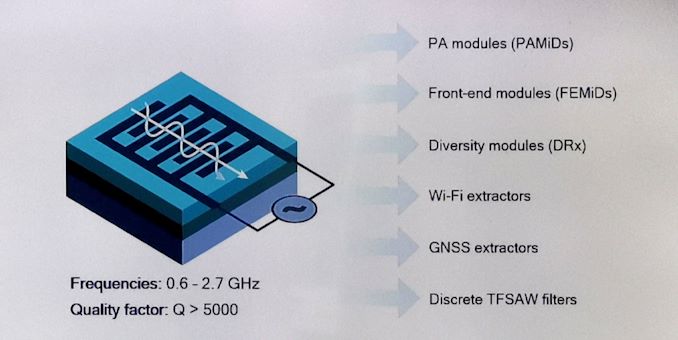

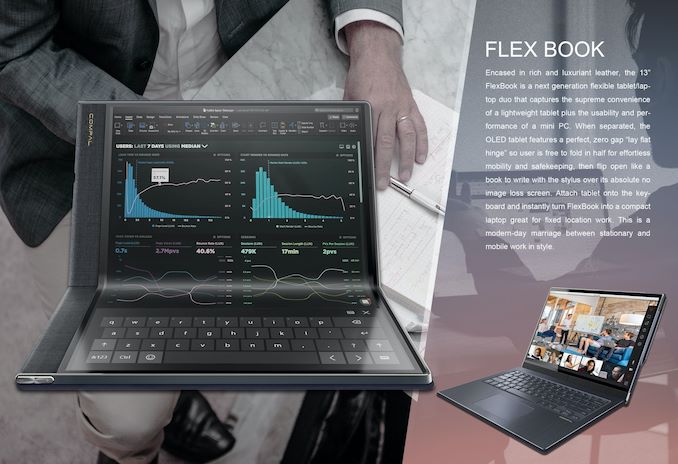


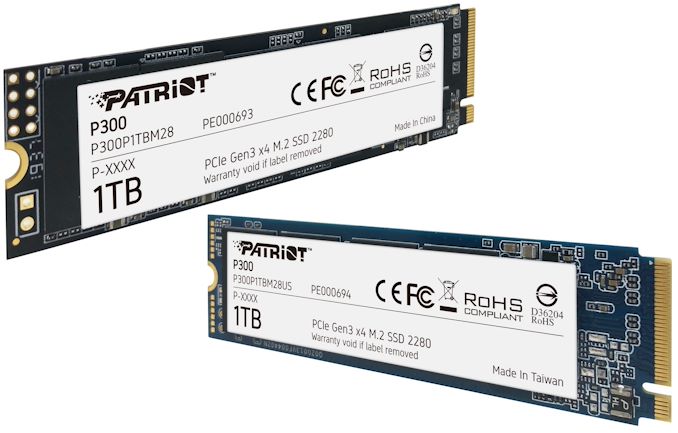

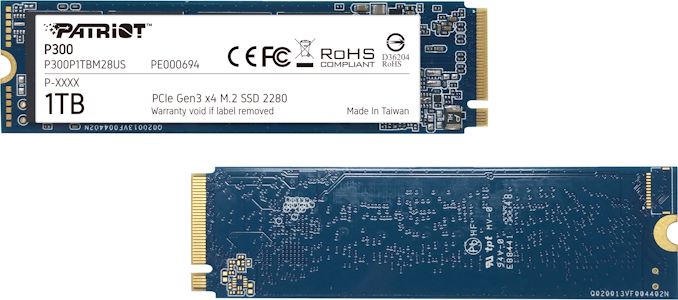
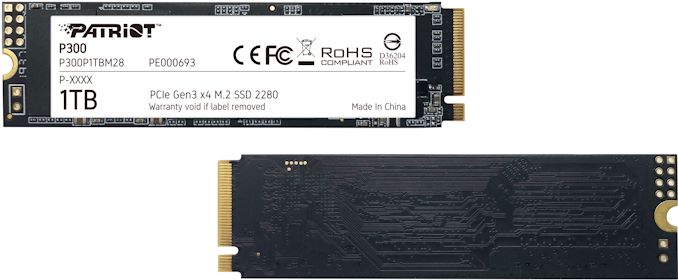
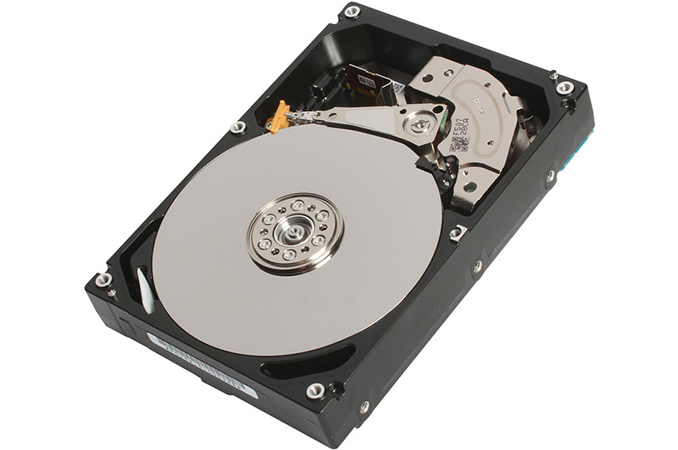
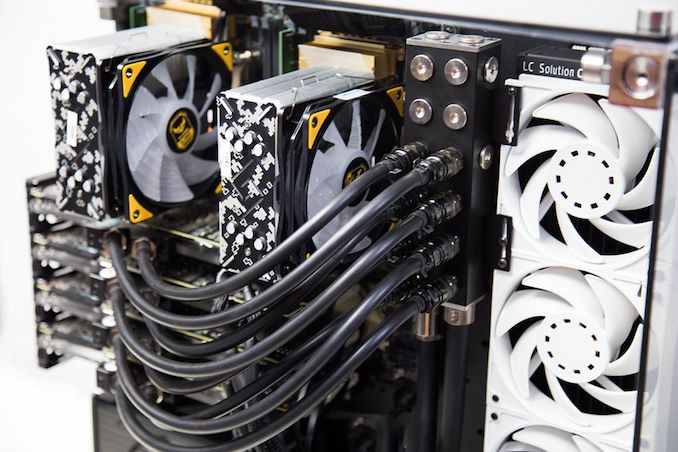
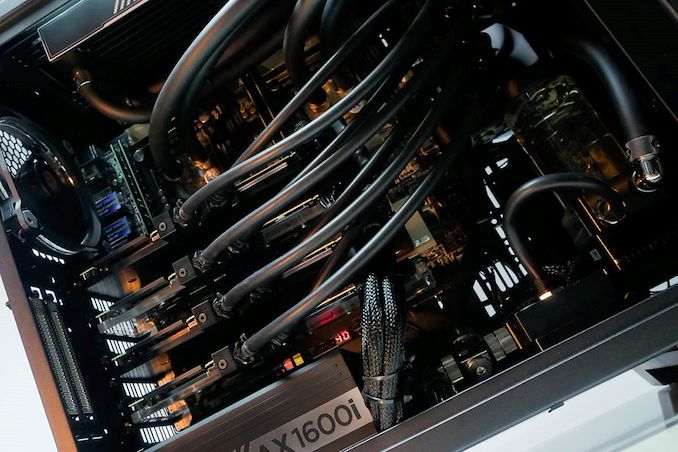


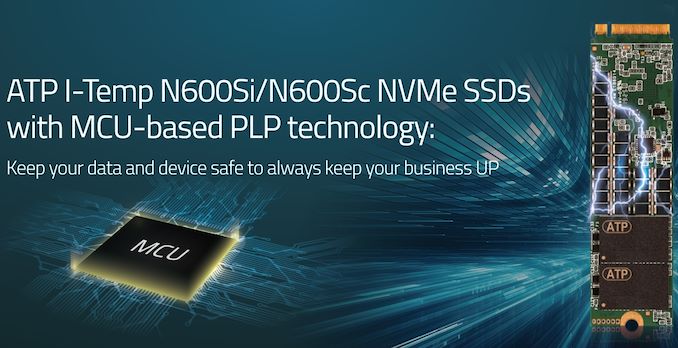
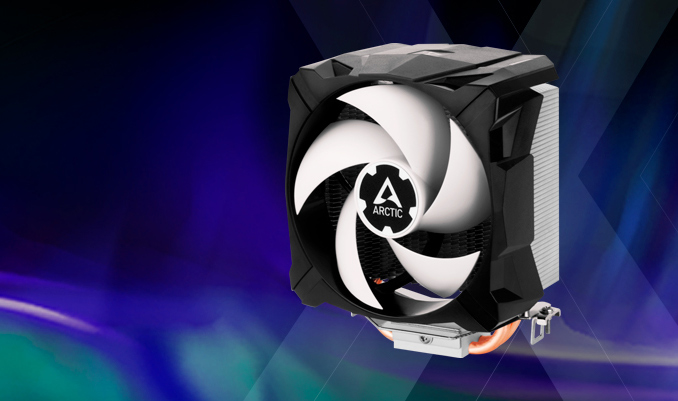
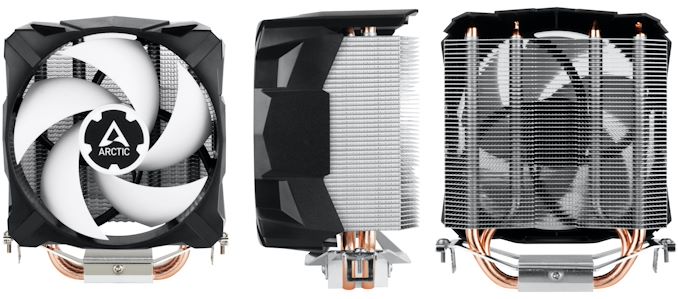
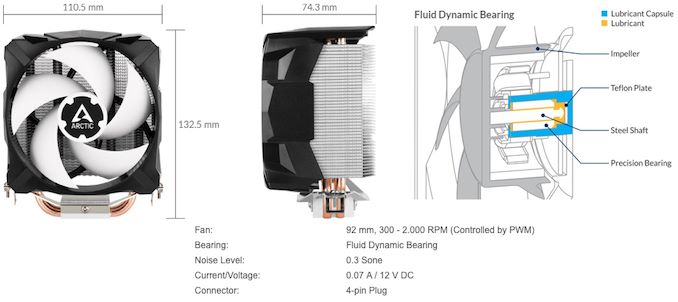
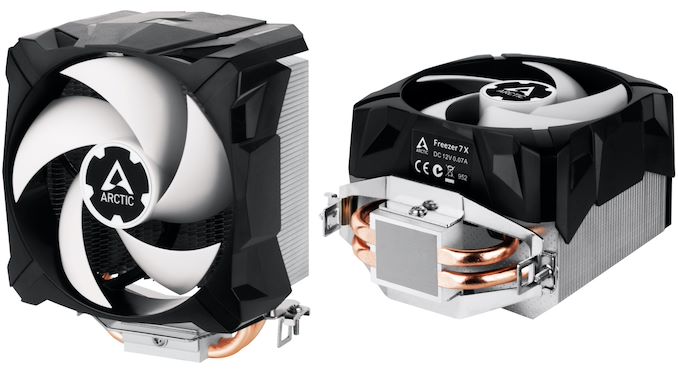
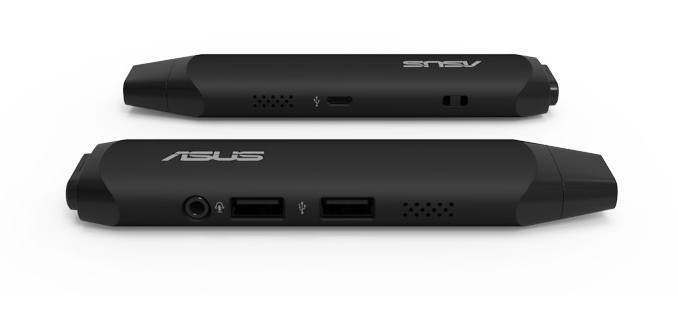
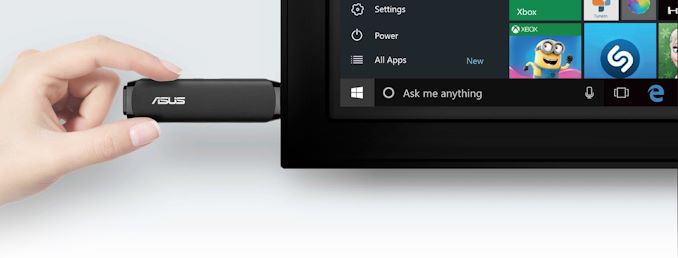
















Bookmarks